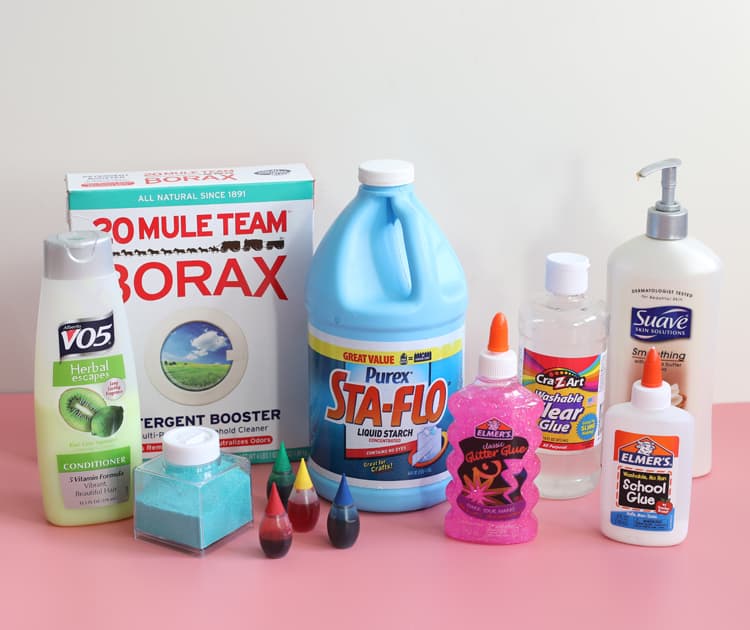The Ultimate Parent’s Guide to Making Slime: Fun, Safe, and Easy!
Hey there, awesome parents! Ready to dive into the squishy, stretchy world of slime with your kiddos? Making slime at home has become a sensational activity that not only sparks the joy of creativity in your children but also introduces them to basic scientific concepts. It’s a fabulous way to bond and create lasting memories. Plus, it’s super easy! So roll up your sleeves, because we’re about to whip up some slime-tastic fun!
What You Need to Know Before Getting Started
Before we get our hands sticky, let’s go over a few important slime-making tips:
- Safety First: Always supervise your children during slime-making sessions. Safety is our number one priority.
- Ingredients: Common slime ingredients include glue, baking soda, and contact lens solution. More on that in a bit!
- Workspace Prep: Cover your surface with newspaper or a plastic sheet to make cleanup a breeze.
- Experiment: Once you nail the basic recipe, feel free to experiment with colors, textures, and add-ins like glitter, beads, or scents!
- Storage: Keep your slime in an airtight container to maintain its squishiness for days to come.
Classic Slime Recipe:
Let’s start with the classic slime recipe. This is the perfect base for all your future slime explorations!
- Grab a bowl and pour in 1/2 cup of non-toxic PVA-based glue.
- Stir in a 1/2 cup of water to the glue until fully mixed.
- If you want to add color, now’s the time! Squeeze a few drops of food coloring into the mixture and stir.
- In a separate bowl, mix 1/2 teaspoon of baking soda with 1 1/4 tablespoon of contact lens solution.
- Slowly add the baking soda solution to the glue mixture, stirring continuously until the slime begins to form and pull away from the sides of the bowl.
- Knead the slime with your hands for about 5 minutes to achieve the perfect stretchy consistency.
Congratulations! You’ve just made classic slime. Feel free to play with it or read on to learn more about other types of slime you can make at home.
Fluffy Slime for a Cloud-Like Experience:
Up next, let’s make some fluffy slime that feels like a cloud in your hands!
- Start by following steps 1 through 3 of the classic slime recipe to make your glue mixture.
- Add in 3 cups of shaving cream to the glue mixture for that fluffy texture.
- Mix 1 teaspoon of baking soda into the fluffy concoction.
- Lastly, stir in 1 tablespoon of contact lens solution and watch as the mixture transforms into fluffy slime!
- Knead it well, and voilà—fluffy slime is ready for play!
Don’t stop now—there’s more slime fun to be had! Keep reading to discover glitter slime, glow-in-the-dark slime, and how to troubleshoot common slime-making challenges.
Slime-making is an activity that transcends age, providing a fantastic tactile experience for both children and adults. It encourages the development of fine motor skills, nurtures creativity, and teaches the wonders of simple chemistry. By following the steps above, you’ve not only created a plaything but also invaluable teaching moments. Imagine the pride in your little ones’ eyes as they stretch and mold their homemade slime, knowing they’ve made it all by themselves—with a bit of help from their super-parent, of course!

5 Things Parents Should Know in Preparing for Slime-Making:
Before the slime-making excitement begins, here are five key points to keep in mind to ensure a successful and fun experience:
- Understand the Ingredients: Know the common slime ingredients and their alternatives. For instance, if you’re using borax, make sure to handle it carefully and use the correct amounts to prevent skin irritation. Always opt for non-toxic, washable school glue as your base. It’s child-friendly and readily available.
- Customize for Sensitivities: Be mindful of your child’s skin sensitivities. Some children may have reactions to the ingredients in slime, like glue or borax. Use gloves or modify recipes with hypoallergenic ingredients if needed.
- Slime Is Not Edible: Make it clear to the little ones that slime, while fun to play with, is not a snack. Even with non-toxic ingredients, consuming large quantities of slime components is not safe.
- Keep It Clean: Ensure your kids wash their hands before and after playing with slime to prevent the spread of germs, and maintain a clean play environment.
- Have Fun with Learning: Use slime-making as an opportunity to introduce basic science concepts such as chemical reactions and physical properties. Ask your child questions about what they observe during the process to stimulate their curiosity and understanding.
Non-Borax Slime for Sensitive Skin:
If you’re looking for a gentler recipe that omits borax, here’s a non-irritating option:
- Pour 1/2 cup of non-toxic PVA-based glue into a bowl.
- Add 1/2 cup of water and mix until uniform. Incorporate food coloring or glitter for a personalized touch.
- Switching contact lens solution with baking soda, mix in 1/4 cup of pure baking soda thoroughly.
- Slowly add in 1 tablespoon of saline solution (look for brands that contain boric acid and sodium borate).
- Stir until the mixture pulls away from the bowl edges, then knead with your hands until you reach a desired consistency.
This non-borax recipe is just as fun and offers a safer alternative for those with sensitive skin.
Creative Slime Ideas to Spark Imagination:
Why not add a dash of creativity to your slime creations? Here’re some ideas to get you started:
- Use glow-in-the-dark paint or pigment to make slime that lights up the night.
- Add foam beads for a fun, crunchy texture.
- Create a calming sensory experience with essential oil-infused slime (do make sure the oils are safe for skin contact).
- Make magnetic slime by adding iron oxide powder and watch it react to magnets!
- Introduce a science lesson with heat-sensitive color-changing slime, using thermochromic pigment.
Slime-making is an activity that sparks not only joy and fun but also nurtures a spirit of discovery and learning. With these tips, recipes, and creative ideas, you’re now equipped to embark on the delightful journey of slime-making with your family. So go ahead, mix up some magic and watch your children’s eyes light up with wonder at their glistening, wobbly creations!
See more great Things to Do with Kids in New Zealand here. For more information see here
Disclaimer
The articles available via our website provide general information only and we strongly urge readers to exercise caution and conduct their own thorough research and fact-checking. The information presented should not be taken as absolute truth, and, to the maximum extent permitted by law, we will not be held liable for any inaccuracies or errors in the content. It is essential for individuals to independently verify and validate the information before making any decisions or taking any actions based on the articles.




